
views
Talking to the Child
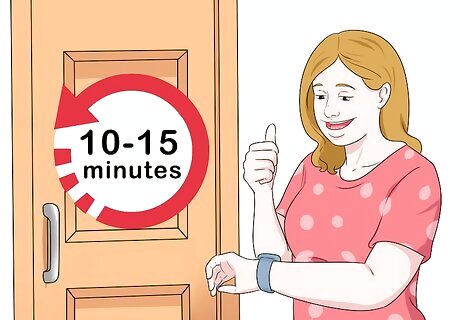
Arrive early to chat with the child before their parents leave. Try to arrive at least 10-15 minutes before the parents plan on leaving so that you can spend a little bit of time with the child before their parents are gone. This will help ease the transition and make the child more comfortable. Be sure to check with the parents ahead of time to make sure it's okay if you arrive a bit early. You can even ask to do a meet-and-greet with the whole family a day or two before you are supposed to babysit. This will help both you and the parents feel more comfortable. The more time you spend with a child, the more comfortable they should become around you. This is also true for babies and toddlers who will be comforted by getting used to the sound of your voice.
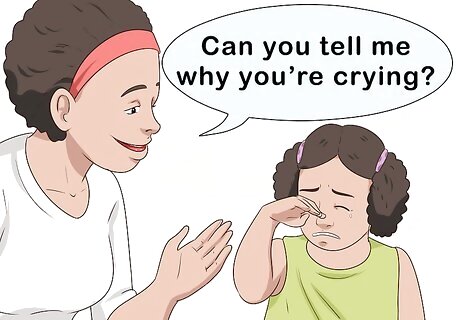
Ask the kid what is wrong. If the child you are babysitting is crying, ask them what is wrong. Try to encourage the child to talk to you about why they are crying. It's likely that they will say that they want their parents, and this will help you learn how to respond to the situation. Try saying something like, “I hate seeing you upset. Can you tell me why you're crying?” If the child will not stop crying, it helps to give them options. “You can either calm down here or go up to your room and calm down up there.” If they do calm down, praise and comfort them. If the child is too young to speak and give you a response, just speaking to them in a soothing voice can be helpful.
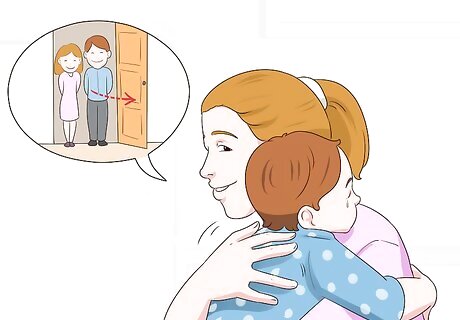
Reassure the child. If the kid wants their mommy, you can reassure the child by telling them when their parents will return home. Maybe it's just a few hours, or maybe it's for a longer period of time. But having concrete reassurance that their parents are definitely coming back can often be enough to calm a crying child. If you are watching an infant or toddler who can't talk to you about their problems, you can offer them a reassuring item such as a pacifier, a favorite toy, or a blanket that they love. This may help calm them down. If the child will be asleep when their parents return, you can say something like, “We're going to have some fun together tonight and your parents will be home with you when you wake up in the morning.”

Speak in a soothing tone. When you talk to the crying child, make sure your voice maintains a calm, soothing tone. This will be reassuring to the child and will help them calm down eventually. Even babies respond well to soothing voices. Try saying something like this, “Remember that I'm here to play with you and take care of you. Your mommy and daddy love you very much and they will be home very soon.”
Distracting an Upset Kid

Offer snacks. A great distraction for a crying child can be something as simple as offering them a favorite treat or snack. For infants and toddlers, try offering them a bottle. For older children, consider giving them some fresh fruit, a couple cookies, or even a bowl of cereal. Make sure you only offer the child parent-approved treats and snacks. You don't want to feed the child something that will upset their stomach, risk choking, or keep them up too late with a sugar overload.
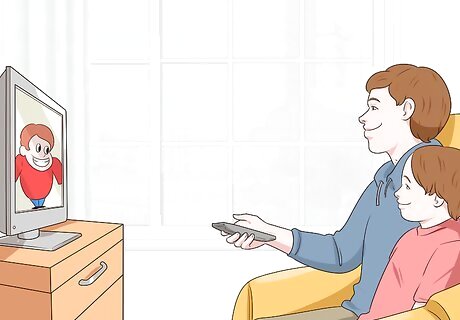
Turn on the television. If the child won't stop crying, try turning on the television to their favorite cartoon or TV show. Children often respond well to the visuals of a show or movie on the big screen and can get easily sucked into the entertainment. This will help them forget about the thing making them cry. You might want to ask their parents ahead of time what their favorite TV show, movie, or DVD is so that you can use it if you need to.
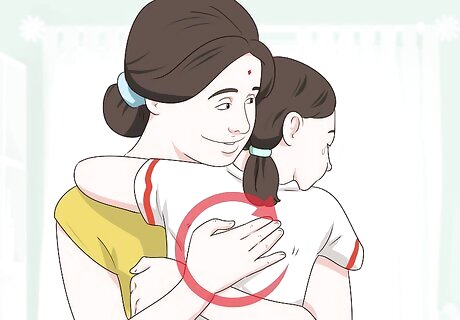
Comfort the child physically. If the child is a baby or toddler, try picking them up and walking around the room with them. The swaying motion can be quite calming for young children. For an older child, offer them a hug, rub their back, or let them sit on your lap while you console them. Physical touch can be quite calming and reassuring for children when they are upset. Be sure they're comfortable being hugged or patted before you do so.
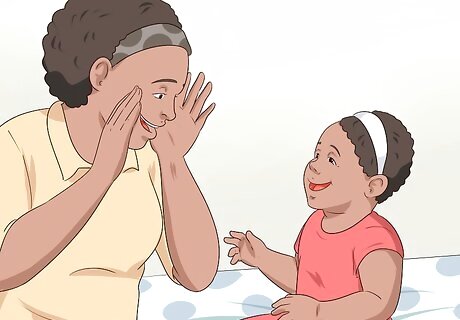
Play games together. Try playing a game with the child to distract them from their emotions. It might be helpful to let the kid win the game so that they have a positive experience. For babies and toddlers, try playing peek-a-boo. Some good games to try with older children include Simon Says, Red Light Green Light, or another kind of cognitive game – like building Legos together.
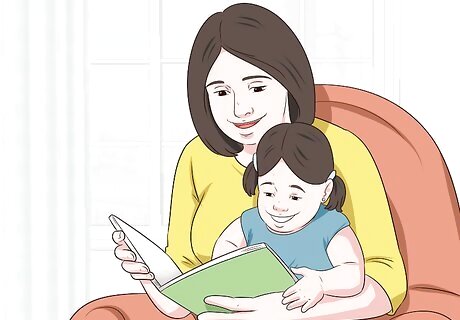
Read them a happy book. Read out loud from an interesting, uplifting book to distract the crying child. Try to get the child to sit in your lap or next to you on the couch so you can begin reading to them. This may be enough to distract them so that they stop crying and listen. Ask the kid what their favorite book is, and read it to them. If they are old enough, you can even have them read it to you. This keeps their mind focused on something constructive. A book with pictures might be the best option for younger children. This will help draw their attention more quickly and distract them from being upset. You may also want to try an interactive book that has buttons and sounds, or other tactile options, to distract a small child.
Responding Appropriately

Stay calm. A crying child can be quite hysterical. It's important that you remain calm and don't add to the chaos. Don't get angry or upset with the child. Just remain calm and try to figure out what the problem is. You can do this by talking to the child, or by using process of elimination with a baby/toddler who can't speak. Getting agitated or excited yourself won't help diffuse the situation at all.
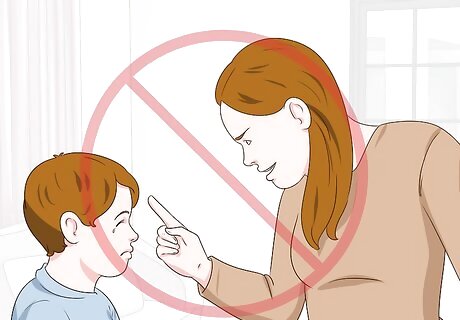
Avoid threats. It's important to comfort and soothe the child, rather than try to threaten or coerce them into behaving the way you want. A crying child needs reassurance and distraction, not a looming punishment. Remember that the child is most likely genuinely upset, so avoid threatening them with a timeout, revoking favorite toys, or sending them to bed early.
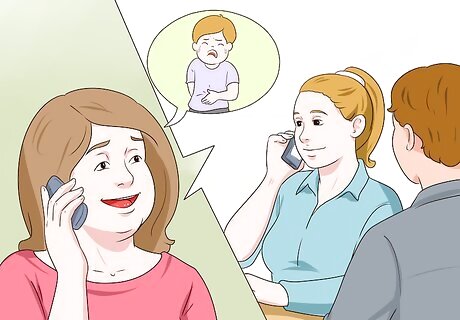
Call the parents. If you can't get the child to stop crying, or if you think the child is crying because they are in pain, you should call the parents immediately for advice about what to do. The parents will be able to talk to the child on the phone, reassure them, and give you directions about what they want you to do. You can also ask the parents about using a video chat app like FaceTime or Skype so that the child can see their parents. If the parents are unreachable, try calling your parents or another trusted adult for advice. If you can't reach anyone else, and you think it is an emergency situation, call 911 for emergency help.

Deal with an emergency situation. If you think the child is crying because they are hurt, quickly assess the situation. If they have fallen, it might be harmful to move the child. Call the parents to discuss the situation with them. You may also need to call the child's doctor's office or 911 emergency services if you think the child is really hurt. If there is a visible wound, try to treat it if you think you can. If there is bleeding, apply pressure with a piece of gauze (or clean paper towel) until the bleeding stops. Rinse the wound with warm water and remove any debris with tweezers that have been sterilized in alcohol. Apply some antibiotic cream and cover it with a bandage. If you treat a wound at home, always check with the child' parents or an emergency contact to see if a doctor's visit is necessary. In the case of severe injury or blood loss, call 911 immediately. Do not wait for the child's parents to return.




















Comments
0 comment